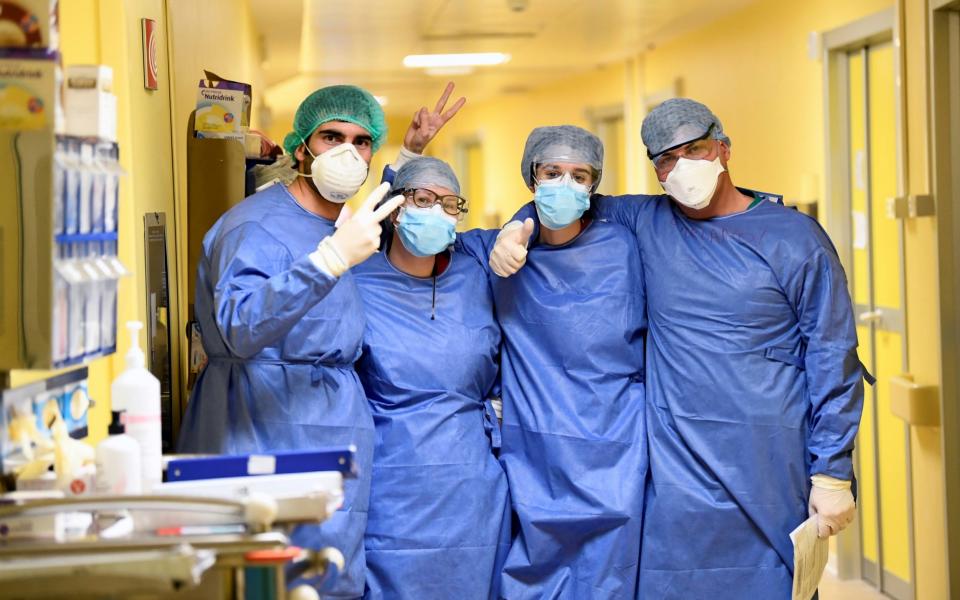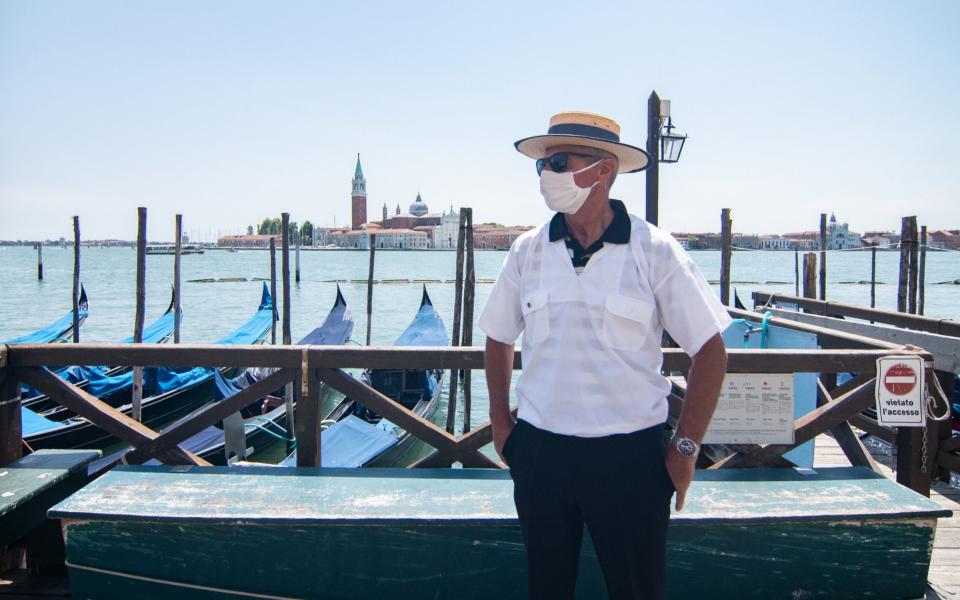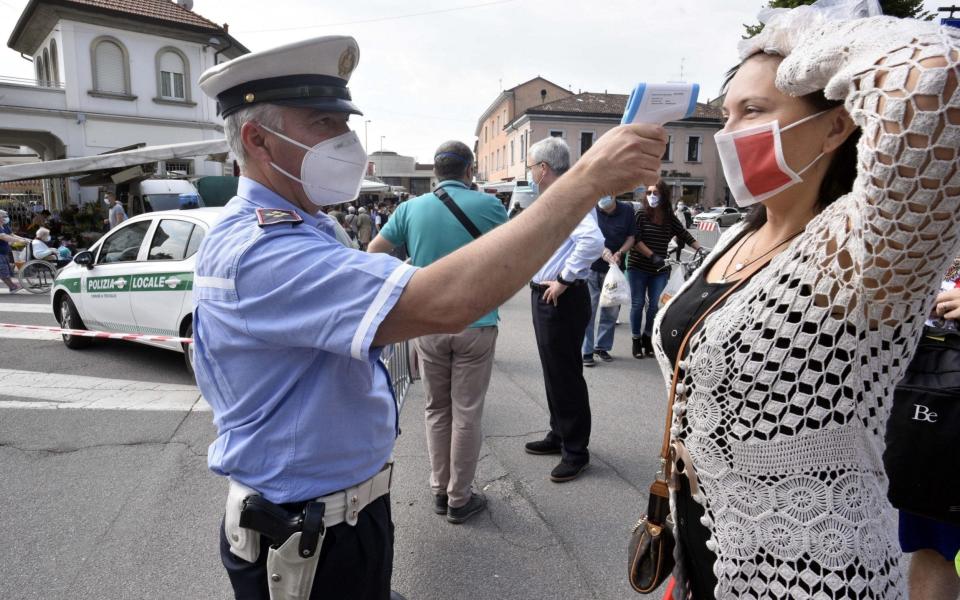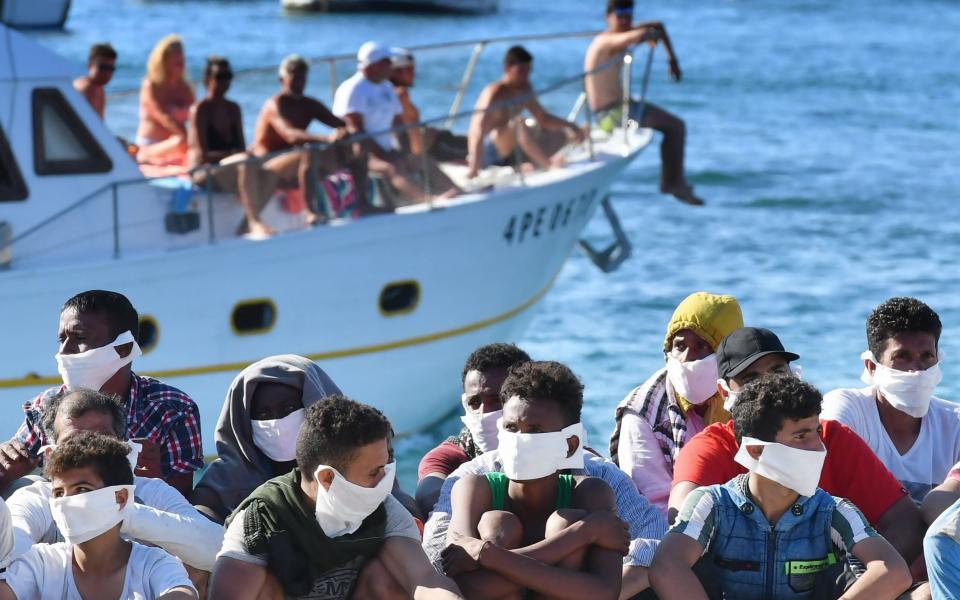Analysis: How Italy, once the world's coronavirus pariah, avoided a second wave

Just a few months ago, Italy was an international pariah, a nation which the rest of the world regarded with a mixture of pity and terror.
At the height of the coronavirus pandemic, more than 900 people died in a day and one city in the north – Bergamo –was so overwhelmed with dead bodies that the army had to be drafted in to take away coffins in a convoy of trucks.
Thankfully, those days seem like a distant nightmare and the tables are turned. Now it is the Italians who regard the likes of the US and Brazil with anguish and sympathy.
Italy has avoided the kind of second wave – or prolongation of the first wave – that has caused such concern in other countries, including Spain, France and Germany.

For the past few weeks, Italy has registered around 150-300 new cases each day, many of them imported by migrants or workers returning from abroad.
Deaths are down to single digits each day, a dramatic reduction from the dark days of March and April.
On Monday, there were just 159 new cases and 12 deaths, while on Tuesday there were 190 new cases and five deaths. The country’s death toll is just over 35,000.
Consensus is emerging as to how the Italians managed to control – the word defeat is far too premature – a virus that went onto ravage so many other countries.
There were two key factors: a strict nationwide lockdown which prevented the virus from spreading from badly-affected northern regions to the rest of the country; and the rigid enforcement of health protocols such as the wearing of face masks and social distancing.
The lockdown, imposed in early March, averted the diffusion of the virus to the dysfunctional south of Italy, where underfunded hospitals lack the resources of those in the wealthy north. Experts said this would have been a catastrophe.
The lockdown was tough, interminable and yet largely respected. For weeks, Italians were not allowed out of their homes unless they had unavoidable work commitments, had to shop for food or buy medicine.

Police cars patrolled the streets, relaying messages through megaphones ordering people to stay at home.
People caught riding their bikes for pleasure rather than to get to work were heavily fined; passengers on buses who did not wear masks were promptly kicked off by the drivers.
Italy had one of the world’s toughest lockdowns, according to the Government Response Stringency Index, which compares the measures taken by nations around the world to combat the virus.
All of this came at a heavy price – Italy’s GDP is predicted to drop by at least 10 per cent this year as a result of the closure of industry and businesses.
But it seems to have worked, and a report released this week showed the extent to which the lockdown shielded the centre and south of Italy from the pandemic.
The report, by the Italian health ministry and the national statistics agency, found that nearly 1.5 million Italians have come into contact with the coronavirus – six times more than the official figure.
It revealed sharp regional differences – in the northern region of Lombardy, which was hardest hit by the pandemic, 7.5 per cent of the population tested positive for coronavirus antibodies.

In Sicily, which was barely touched by the virus, just 0.3 per cent have antibodies, and in half a dozen other southern regions less than one per cent of residents had virus antibodies.
Dr Franco Locatelli, a key government adviser on the pandemic, said the geographic variability in the results showed that the lockdown was "absolutely crucial in sparing central and southern Italy from the same epidemiological wave that hit the north."
The report “confirms that the establishment of red zones in the northern regions and then the national lockdown broke the chain of transmission, separating the north from the south and the islands (of Sicily and Sardinia),” said Roberto Speranza, the health minister.
Since the lockdown was eased, anti-coronavirus protocols have been maintained. On buses, trains and ferries, it is compulsory to wear masks and compliance is close to 100 per cent.
There has been a remarkable level of consensus over the need to keep wearing masks and they have become part of the fabric of life, with people looping them over their elbows or slipping them into a handbag when they are not needed.
Office workers who have returned to work have their temperature tested on arrival and are required to wear masks in communal areas of their offices.
Bottles of hand sanitiser and pedal-operated dispensers are ubiquitous and companies have cut the number of people allowed to occupy offices.
As Italians flock to the coast for their holidays, even beach bars require people to wear masks as they line up for a cold Peroni or a café macchiato in their bikinis and board shorts– and the majority comply.

“It’s clear that we won’t return to normal living until we have a vaccine. It will be found, but it will probably take two years before it is available to everyone,” said Giorgo Palu, a professor of virology at Padua University and a former president of the European Society for Virology.
The popular stereotype of Italians being unruly, undisciplined and resistant to following rules and regulations has been turned on its head in the last five months.
There may have been cultural factors at play. Italians tend to be anxious over their health – children are told not to run around and sweat too much in the summer and ordered not to swim within an hour or two of eating; adults obsess over the dangers of catching a chill or worse from air-conditioning or draughts.
Angst over personal health may have encouraged widespread respect of the anti-virus measures.
“The trend is positive, thanks to the containment measures that were taken,” Marcello Tavio, the president of the Italian Society of Infectious Diseases, told La Repubblica newspaper.
But the hard-won gains of the last few months could easily be lost if people drop their guard and start relaxing.
Health experts and ministers are constantly warning that disaster lurks around the corner if Italy becomes too complacent.
There is alarm over young people going out at night, crowding into piazzas to socialise, drink and flirt.
“We are seeing too many gatherings, with people not taking the necessary precautions,” said Dr Tavio.
The holiday island of Capri, near Naples, was so alarmed at the number of tourists congregating in its piazzas that it ordered masks to be worn outside as well as inside.
The colder temperatures of the autumn and winter could lead to a dramatic spike in contagions unless health protocols are maintained, said Dr Tavio.
“We have to be very careful in the autumn, when the favourable climate conditions of summer will end. The health system will need to intercept new cases at the earliest possible stage.”
There is also concern over immigrant workers from Eastern European countries like Romania, and Asian countries like Bangladesh, bringing new cases into the country. A new wave of illegal migrants arriving from Tunisia and Libya is also causing alarm, with some of them found to have Covid-19.
Mr Speranza, the health minister, says Italy is by no means out of danger yet. “We cannot lower our guard. We may be out of the storm, but we are not yet in a safe harbour.”

 Yahoo News
Yahoo News 